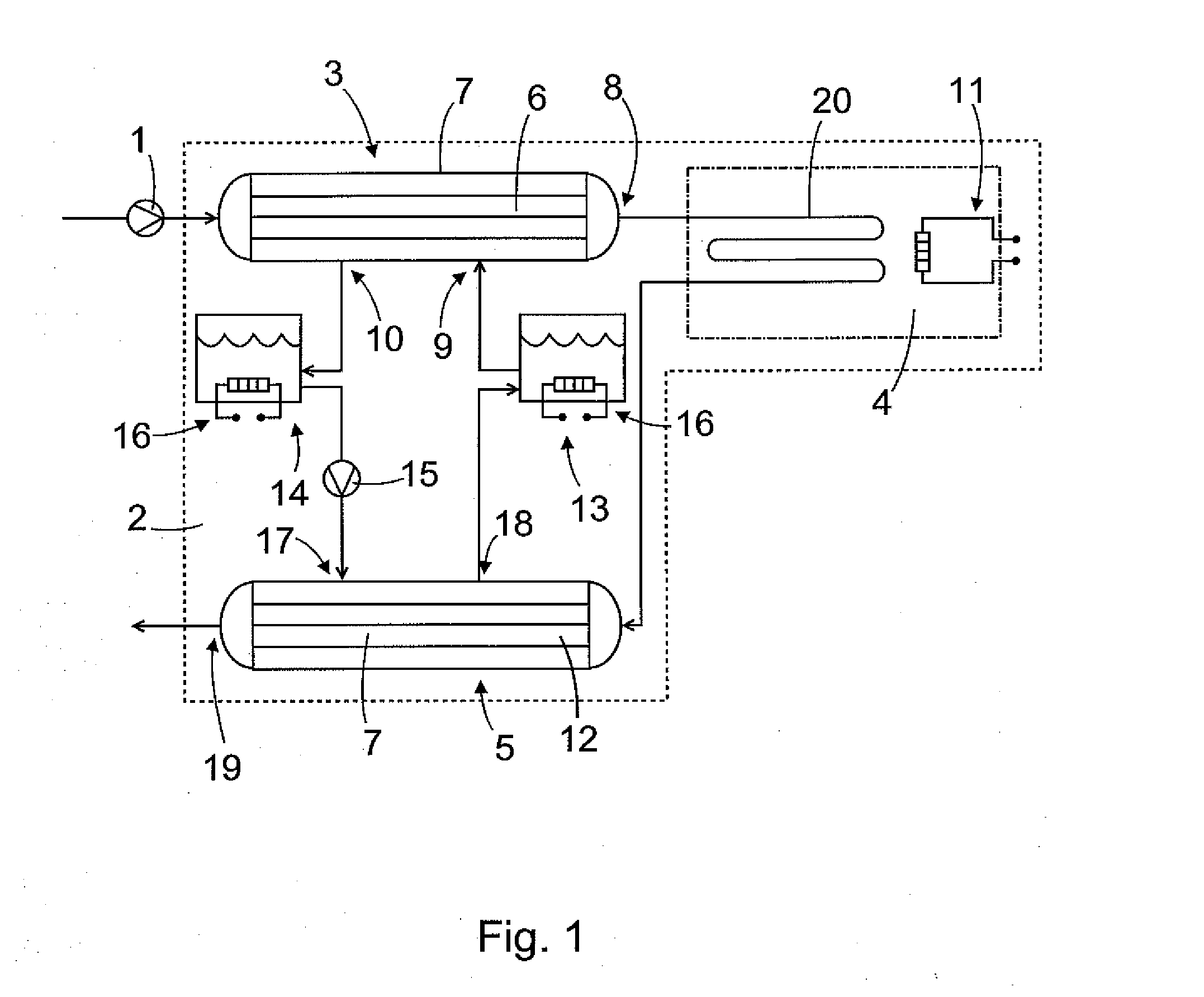Method for heat exchange, system and use
a heat exchange and biomass technology, applied in the direction of gasification process details, combustible gas production, chemical industry, etc., can solve the problems of high energy consumption of the process, high pressure on both sides of the tube, and the heat exchangers that are known to not work well in hydrothermal gasification and/or liquefaction processes, etc., to achieve high viscosity, high heat exchange rate, and high viscosity
- Summary
- Abstract
- Description
- Claims
- Application Information
AI Technical Summary
Benefits of technology
Problems solved by technology
Method used
Image
Examples
Embodiment Construction
[0023]FIG. 1 is a schematic representation of a system and a method of the invention shown as a process flow diagram.
[0024]First, a biomass, which is optionally mixed with additives and / or catalysts is pressurized to a desired pressure, for instance in the range of 150-400 bar, by pressurizing means 1 and fed to a reactor system 2. The pressurizing means 1 shown in FIG. 1 comprises a pump. The pressurizing to the desired pressure may take place in one step, for example by one pump, or stepwise, for example by several pumps connected in series.
[0025]In another embodiment of the invention there are two or even more streams of biomass, additives and / or catalysts, which are fed separately to the reactor system 2. Said streams mix and form the reaction mixture in the reactor system 2.
[0026]The biomass contains typically at least 70 weight-% water. Said water is preferably mainly the moisture i.e. water already present in the biomass. Additional water may be admixed if necessary.
[0027]The...
PUM
| Property | Measurement | Unit |
|---|---|---|
| Temperature | aaaaa | aaaaa |
| Temperature | aaaaa | aaaaa |
| Pressure | aaaaa | aaaaa |
Abstract
Description
Claims
Application Information
 Login to View More
Login to View More - R&D
- Intellectual Property
- Life Sciences
- Materials
- Tech Scout
- Unparalleled Data Quality
- Higher Quality Content
- 60% Fewer Hallucinations
Browse by: Latest US Patents, China's latest patents, Technical Efficacy Thesaurus, Application Domain, Technology Topic, Popular Technical Reports.
© 2025 PatSnap. All rights reserved.Legal|Privacy policy|Modern Slavery Act Transparency Statement|Sitemap|About US| Contact US: help@patsnap.com


